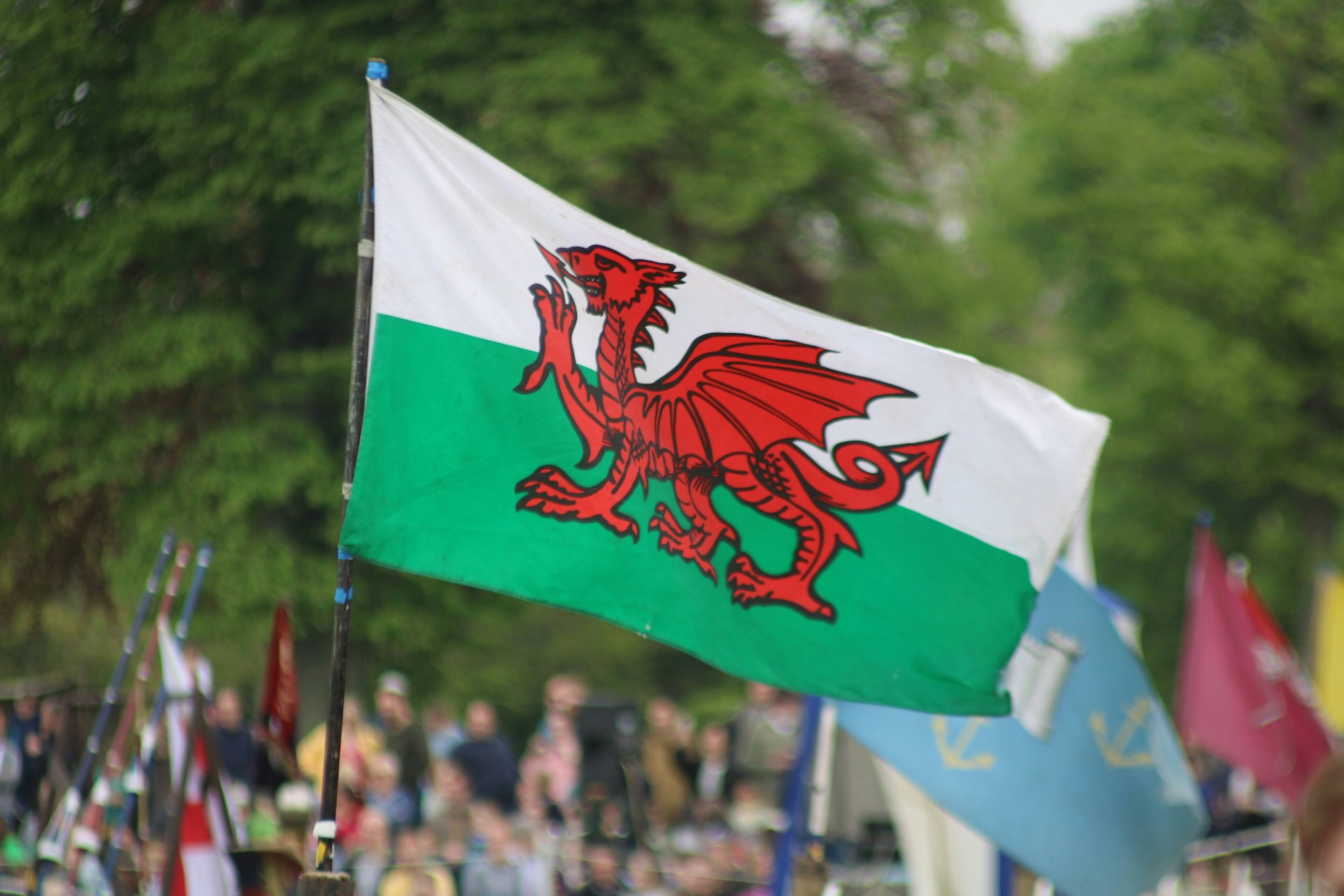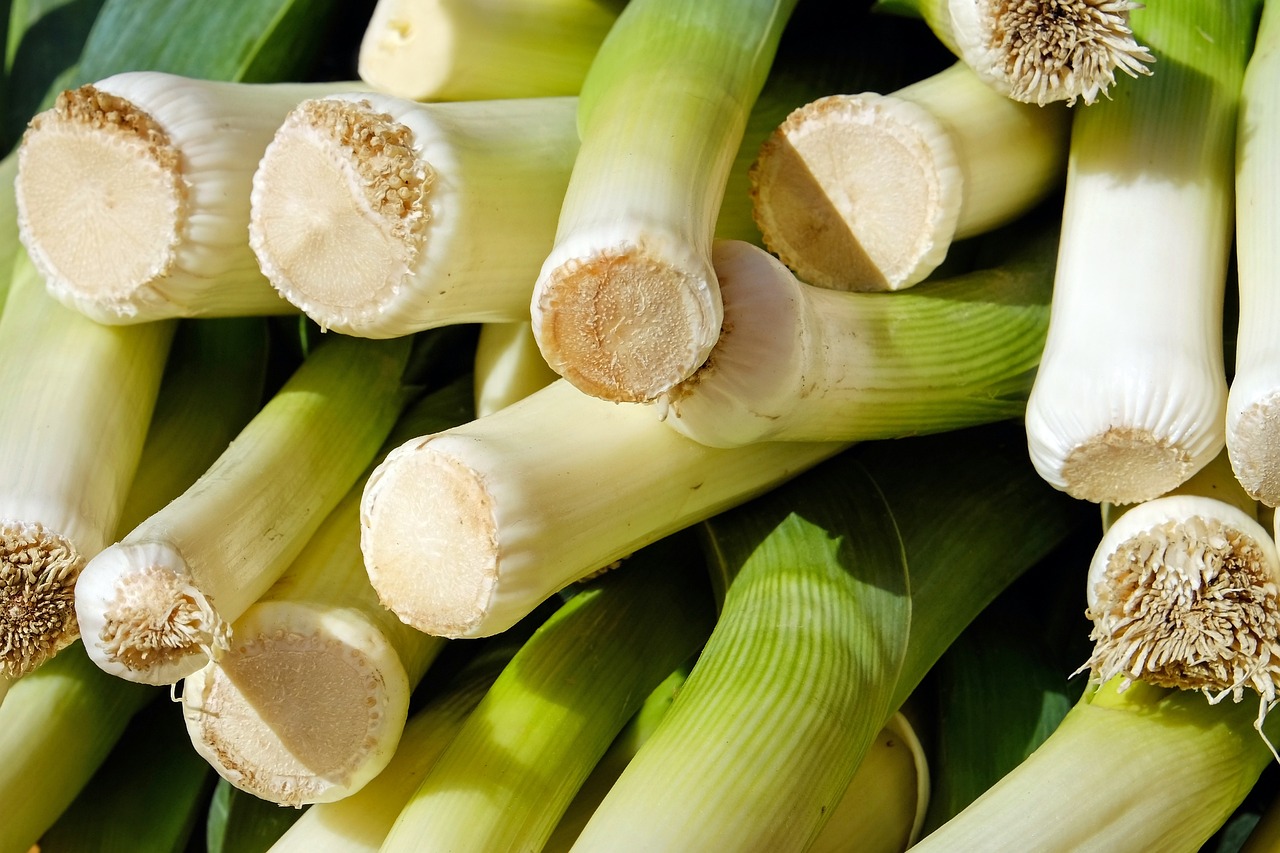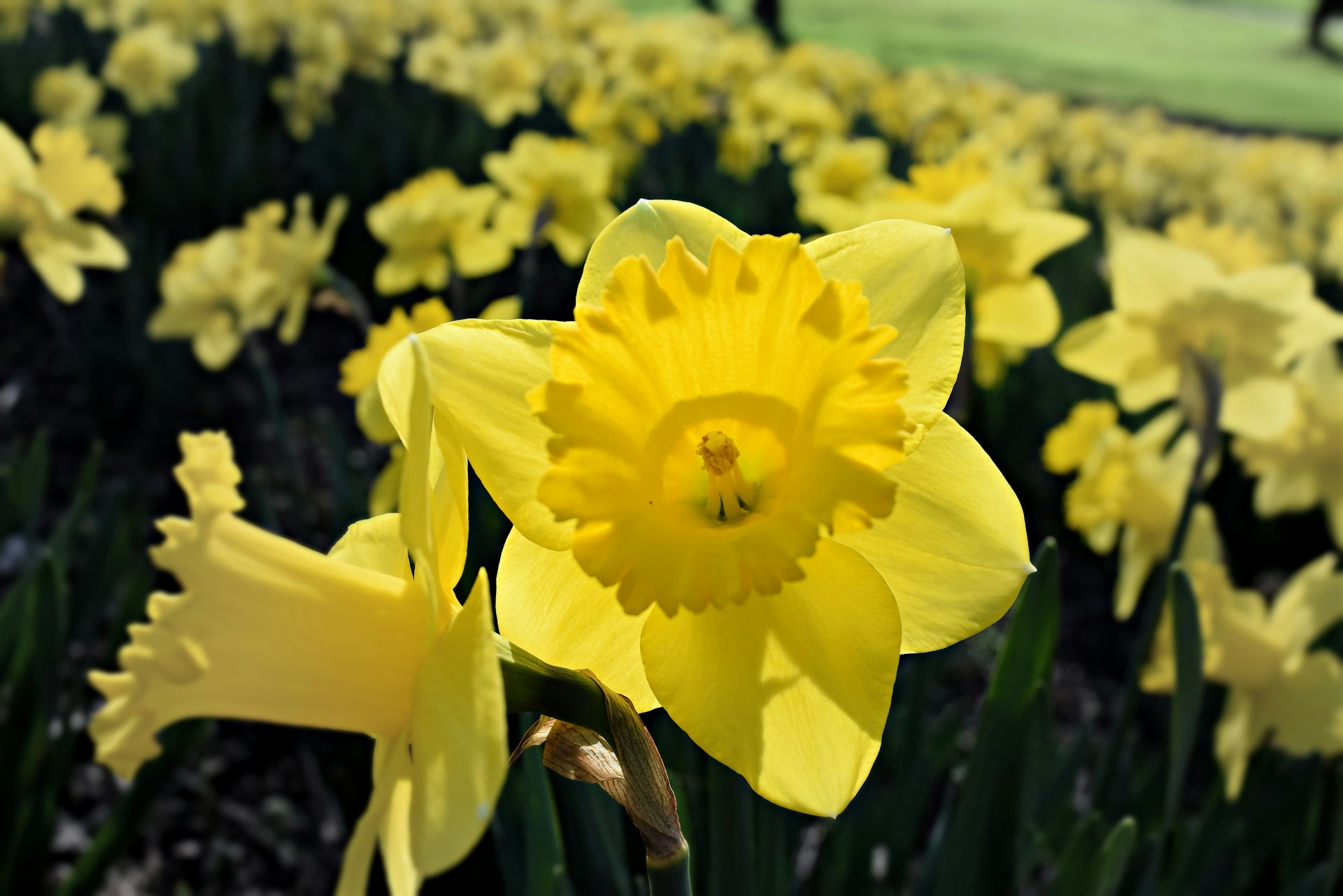National symbols pay homage to a country’s heritage and create a sense of national unity and identity. Wales boasts a number of particularly iconic symbols, with several things being intrinsically linked with the country and an enduring sense of Welshness.
What are the Common Welsh Emblems & Symbols?
- The Red Dragon
- The Leek
- The Daffodil
The three most well-known symbols of Wales are probably the red dragon, leeks and daffodils. However, there are several other things that evoke the country’s proud heritage and national identity.
- The Welsh Lovespoon
- The Welsh Harp
- The Flag of St David
- The Red Kite
- Welsh National Dress
- The Welsh Language
- Rugby Union
1. The Red Dragon (Y Ddraig Goch)
Perhaps the most iconic and recognisable symbol of Wales is the red dragon, or y ddraig goch, that appears on the Welsh national flag. Dragons as a heraldic symbol have been used since Roman times. It’s thought that the Welsh kings of Aberffraw were among the first to adopt the dragon as a symbol of Welsh power after the Romans withdrew from Britain in the 5th century.
Despite long being used by and associated with the country, the red dragon flag did not officially become the National Flag of Wales until 1959. Nowadays, you’ll see countless souvenir and gift shops selling merchandise that puts the beloved dragon front and centre!

Why is the Dragon a Symbol of Wales?
This ancient symbol of Wales has many legends and historical figures attached to it, providing a sense of proud tradition and legacy. The red dragon is traditionally associated with the 7th century King Cadwaladr of Gwynedd – it is sometimes known as the dragon of Cadwaladr.
The dragon crops up in many stories throughout history, including the earliest collection of Welsh prose stories the Mabinogion and Geoffrey of Monmouth’s Historia Regum Britanniae, which also ties it to Arthurian legend. Many of these tales describe a red dragon (coming to represent the Welsh) in battle with a white dragon (coming to represent the English), fighting until the red is the eventual victor.
With these connotations of victory over the English, the flag was also prominently used by Owain Glyndwr in his rebellions against the English in the early 15th century.
Later in the century, Welsh-born King Henry VII also adopted the symbol with a white and green background when fighting in the Battle of Bosworth, after which he claimed the English throne.
2. The Leek
The leek is another symbol that has been associated with Wales for centuries. The humble vegetable appears in several legends and stories, but it’s not particularly clear how they came to be linked to the nation.
While we may not know its exact origins, the Welsh association with leeks remains strong today, with some wearing leek badges on St David’s Day, particularly Welsh regiments.

Why is the Leek a Symbol of Wales?
Legend says that King Cadwaladr of Gwynedd told his soldiers to attach leeks to their armour to help distinguish them from the enemy. Sometimes, this story is given to St David, who may have also told his men to wear leeks on their helmets to set them apart from the invading Saxons. In either case, the act of wearing a leek or its imagery has endured as a practice to indicate Welshness.
In the later 14th century, it’s also thought that Welsh archers fighting in the Battle of Crecy wore green and white colours on their uniform, hinting at an association with the leek.
It was the Tudors, though, who solidified the practice of wearing leeks and what it has come to signify when they instructed their guards to wear leeks on St David’s Day.
3. The Daffodil
The bright yellow flower has come to be considered the national flower of Wales. The daffodil is a far newer Welsh symbol compared to the dragon and the leek, only really rising to prominence in the 19th and 20th centuries.
These days, daffodils are often worn alongside or instead of leeks on St David’s Day, which is on March 1st, around when the flowers start to bloom. They tend to be more popular to wear than leeks now, and daffodil imagery has become integral to the traditions and celebrations of the day. It’s also not uncommon to see sports fans wearing daffodil hats when they attend games.

Why is the Daffodil a Symbol of Wales?
The Welsh name for daffodils is cenhinen Bedr, which means ‘Pete’s leek’. This link to leeks may be part of the reason these flowers have become so popular as a Welsh symbol, as they came to be a prettier and more vibrant wearable alternative.
The daffodil’s rise in popularity is often attributed to former UK Prime Minister David Lloyd George, who wore a daffodil during the 1911 investiture of the Prince of Wales.
4. The Welsh Lovespoon
Another classically Welsh item, and something you see in various gift shops when visiting Wales, is the Welsh lovespoon. These intricately carved wooden spoons were traditionally given as tokens of affection from a man to the woman he hoped to marry.
Various motifs are used on the spoons to represent different things, with hearts, birds, flowers, dragons, knots, rings, horseshoes and locks being common design elements. These days, the spoons may be gifted on special occasions like birthdays, weddings and anniversaries.
5. The Welsh Harp
The national instrument of Wales is the Welsh harp, also known as the triple harp. Although an import from 17th-century Italy, the harp quickly became a popular instrument among the Welsh and has since come to define the sound of traditional Welsh music and the image of the Welsh bard.
6. The Flag of St David
As the patron saint of Wales, St David is somewhat of a Welsh symbol himself. His flag, a gold cross on a black background, is used in the iconography of various Welsh institutions and is often flown on St David’s Day.
7. The Red Kite
The bird of prey, the red kite, has been dubbed Wales’ national bird. During the 1980s the birds were hunted to near extinction, but following serious conservation efforts, they are now a far more familiar sight, with around 6,000 red kite pairs across the UK.
They are often seen across rural Wales as well as some parts of England, Scotland and Northern Ireland.
8. Welsh National Dress
What we now think of as traditional Welsh national dress – the tall black hats, red shawls and dresses known as bedgowns – are based on the typical outfits worn by working women in 19th-century rural Wales.
While obviously not everyone was wearing this distinctive outfit, it became a popular image within the late 19th century Welsh tourism industry and was often used on postcards and souvenir merchandise, cementing it as the ‘official’ fashion associated with the country.
9. The Welsh Language
Welsh is a Celtic language that evolved from the Brittonic language and, as such, is Britain’s oldest language. The number of Welsh speakers was set on a path of decline in the 16th century when Henry VIII passed the Act of Union which prohibited the use of Welsh in public administration. The Victorians also accelerated the decline of the language by punishing children who spoke Welsh.
By the late 20th century, a lot of effort went into reviving the language and reforming education to encourage the Welsh people to proudly speak their language once again. Now, over a quarter of the population can speak or use Welsh, and you will see/hear it used on road signs, newspapers, radio stations and TV, as well as out and about in daily life!

10. Rugby Union
Rugby is considered by most to be the national sport in Wales. There is an evident public appetite for rugby. Win or lose, nothing quite brings people together more than rooting for the same team. The passion for the game has solidified the sport as a strong symbol of Wales.
Since its rise to popularity as a national pastime, the Welsh rugby team has enjoyed several golden eras and has won the Six Nations Championship outright 28 times.
Thinking of visiting this glorious country? From New Quay holiday cottages to accommodation in Tenby and everything in between, we’re proud to offer a diverse range of stays across West Wales to ensure you can plan the perfect getaway.
See our latest offers to book your last-minute holiday.
